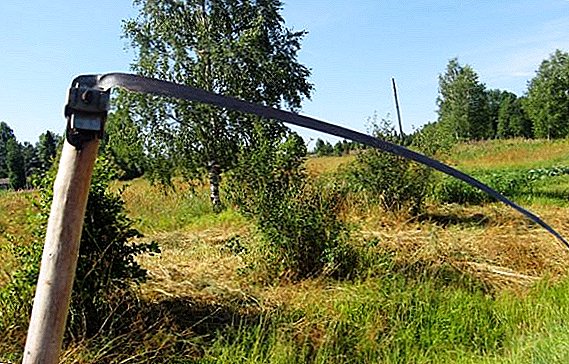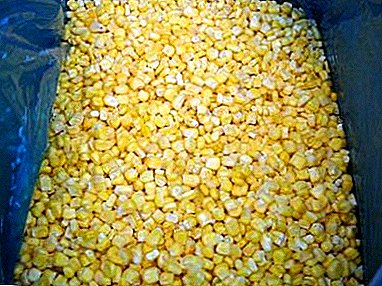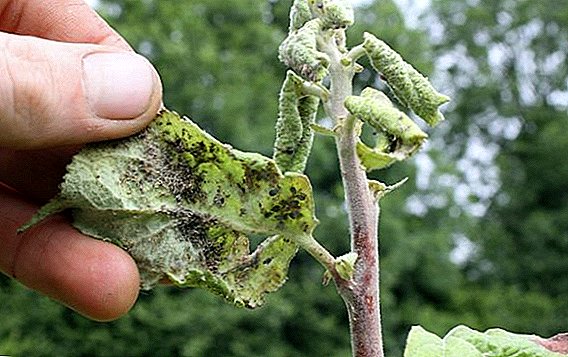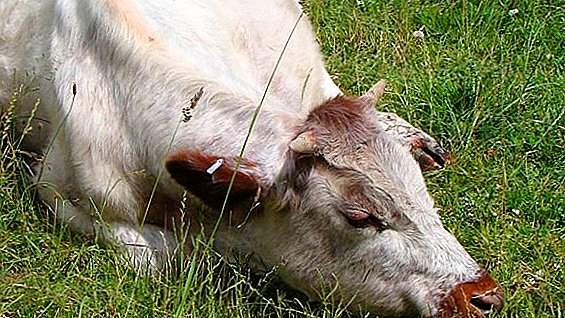 Babesiosis is one of the most common ailments of cattle, which is found in both hot and temperate and northern regions. Every year this disease leads to serious losses and large-scale death of livestock. In this article we will take a closer look at what babesiosis is, and also get acquainted with the main symptoms and ways to combat this ailment.
Babesiosis is one of the most common ailments of cattle, which is found in both hot and temperate and northern regions. Every year this disease leads to serious losses and large-scale death of livestock. In this article we will take a closer look at what babesiosis is, and also get acquainted with the main symptoms and ways to combat this ailment.
What is babesiosis
Babesiosis is a complex invasive damage to the organism of animals, caused by the development in the organs and tissues of the protozoa of the genus Babesia. Parasitic babesia are quite infectious, these organisms are distributed almost on all continents of the planet, with the exception of Antarctica.  The disease has a rather vague symptoms, it is often identified with piroplasmosis. That is why today this animal disease is one of the least studied.
The disease has a rather vague symptoms, it is often identified with piroplasmosis. That is why today this animal disease is one of the least studied.
Read also about how to treat such an invasive disease of cows as teliasiosis.
Pathogen, development cycle, sources and routes of infection
Babesia - unicellular, parasitic within the cellular structures of the blood. Most often they can be found in red blood cells, in which they multiply and spread throughout the body of an animal. During initial development, the parasite attacks only a few percent of healthy red blood cells, but if left untreated, it is able to hit more than half of healthy blood cells.  Parasitic babesia As a result of the development of the parasite in the body of animals accumulate potent toxins, which have a toxic effect. First of all, it manifests itself in severe lesions of the nervous system and the deterioration of the work of various organs and systems.
Parasitic babesia As a result of the development of the parasite in the body of animals accumulate potent toxins, which have a toxic effect. First of all, it manifests itself in severe lesions of the nervous system and the deterioration of the work of various organs and systems.
The pathogen is quite infectious, so avoiding babesiosis without annual preventive measures is almost impossible.
It will probably be useful for you to familiarize yourself with the best breeds of cows: Yakut, Belgian blue, Hereford, Simmental, Dutch, Holstein and Ayrshire.
Deep abscesses also have to open
The life cycle of the parasite development includes a gradual change of hosts. The main carrier of the disease are parasitic mites of the genus Ixodes therefore, babesiosis is often seasonal and correlates with the period of mass development of ticks (June-July).Almost all members of the genus are carriers of a specific type of babesiosis pathogen, therefore the disease occurs quite often in many mammals. The main reservoirs for the development of the disease are animals infected with a microorganism and additional carriers - rodents (mice and rats).  Rodents - carriers of the disease babesiosis
Rodents - carriers of the disease babesiosis
After being bitten by an infected animal, the parasite migrates actively into the body of the tick with blood. After some time, the microorganism multiplies rapidly and spreads throughout the body of the tick. At the same time the insect does not suffer from the development of babezium and leads a natural lifestyle. After the eggs are laid by the female, babesia ticks are introduced into the body of the young offspring of insects.
Did you know? Babesias were first identified and described in 1888 by the Romanian researcher Victor Babesh, in whose honor the simplest in 1893 received their modern name.
In this case, the parasite becomes the natural microflora of the tick until the end of its life. After another insect bite, babesia is transmitted to the next animal, which becomes a new reservoir for the parasite.
Sometimes babesia occur in rodents - this is a vital norm for maintaining the level of a microorganism population. The parasite also gets to the rodents after being bitten by an infected tick, but in this case, babesia do not cause severe damage to the body of rats and mice: often such an invasion for their body goes almost asymptomatically.  Rodents become infected with babesiosis through ticks. Thus, rodents become an intermediate reservoir for the transmission of infection to domestic animals through the bites of bloodsucking ticks.
Rodents become infected with babesiosis through ticks. Thus, rodents become an intermediate reservoir for the transmission of infection to domestic animals through the bites of bloodsucking ticks.
Sometimes babesiosis spreads among livestock due to the direct contact of healthy individuals with infected blood relatives. Often this occurs during mass vaccination of livestock. In this case, the main reason for the introduction of the parasite into the body is non-observance of general veterinary and sanitary rules when working with physiological fluids and animal tissues.
Did you know? Most modern cattle breeds (cattle) come from extinct tours - a variety of ancient cloven-hoofed animals, cultivated by humans about 8-10 thousand years ago.
Incubation period and symptoms
After the parasite enters the body, the incubation period for the development of the disease is observed for 8-14 days. At this time, the microorganism practically does not manifest itself, and its reproduction is often asymptomatic for animals. After the incubation period, acute damage to organs and systems occurs.  At this point, the parasite is actively implanted in the red blood cells of the body, and the toxins secreted by it become enough to have a negative impact on livestock health.
At this point, the parasite is actively implanted in the red blood cells of the body, and the toxins secreted by it become enough to have a negative impact on livestock health.
Babesiosis is often acute for 7-10 days. From the first days of this period, animals experience strong diarrhea, which after a short period of time passes into atony of the anterior stomach. This leads to a rapid loss of body weight, as well as dehydration, with the result that the affected individuals show apathy and an overall decrease in activity.
Farmers need to know the causes of the appearance of blood in the milk in a cow and the methods of treatment.
In the end, there is a deterioration in the quality and quantity of livestock products (milk yield is reduced by 40-80%, meat and milk may acquire an unpleasant or bitter taste).  The unpleasant taste of milk, as a consequence of babesiosis in a cow. The main symptoms of babesiosis include:
The unpleasant taste of milk, as a consequence of babesiosis in a cow. The main symptoms of babesiosis include:
- increase in total body temperature to + 41 ° С;
- feverish conditions against a heat;
- pallor or yellowness of mucous membranes;
- spot bleeding on mucous membranes;
- rapid breathing (up to 80 respiratory movements per minute);
- heart palpitations (about 110 beats per minute and above);
- bleeding from the urine (2-3 days of the acute course of the disease);
- decreased blood density;
- a sharp drop in the number of erythrocytes in the blood (by 50-60%);
- among erythrocytes, the number of anisocytes, poikilocytes, polychromatophils and normoblasts sharply increases;
- depletion of the body.
 Cow depletion is one of the symptoms of babesiosis
Cow depletion is one of the symptoms of babesiosisMethods for diagnosing babesiosis
An accurate diagnosis is made in a comprehensive manner based on:
- bright epizootological manifestations;
- seasonal manifestations of the main symptoms;
- the main clinical signs of parasite development;
- careful microscopy of blood smears for the presence of abnormalities of blood cells;
- studies of blood smear from the ear of an animal stained according to Romanovsky-Giemsa;
- comprehensive assessment of the state of the internal organs at the opening of the dead animals.
 Diagnosis of babesiosis at the opening of a dead cow
Diagnosis of babesiosis at the opening of a dead cowPathological changes
Babesia has a serious effect - with a sufficiently long invasion, the parasite causes the following pathological-anatomical changes in organs and tissues in cattle:
- swelling and yellowness of the subcutaneous tissues, as well as the serous membranes of the abdominal organs;
- redness and wateriness of the lymph nodes;
- increase in the size of the spleen by 1.5-2 times, while its edges become blunt, the capsule is tense, when cut, the pulp has a dark red tint;
- an increase in the size of the liver, while its surface becomes flabby;
- an increase in the size of the gallbladder, its contents acquires a greenish tint and granular structure;
- inflammation of the kidneys, under the capsule there is a clear hemorrhage, the parenchyma acquires a flabby structure;
- bleeding into the internal cavity of the bladder;
- flabbiness of the heart muscle;
- cardiac hypertrophy;
- hemorrhage on the pericardium and endocardium;
- swelling of the lungs;
- overcrowding of cerebral vessels with bleeding;
- bleeding in the chest cavity and bladder;
- copious mucous discharge on the surface of the intestine and abomasum, often with bloody inclusions.

How to treat
The main thing in identifying babesies in the body of animals is not to delay: the parasite is rapidly affecting the body of animals, and also leads to negative pathological changes in the organs and related systems. In this case, the affected individuals not only restore their productivity with difficulty, but often die.
Therefore, at the first signs of illness, the animal should be provided with the necessary comfort, peace, proper feeding and reception of a complex of various high-quality antiparasitic drugs.
Complete rest
The first thing to start treating sick individuals is to provide isolation and rest from other animals. Excessive activity and long physical walks adversely affect the general condition of the animals during the rapid reproduction of the parasite.
This leads to even greater inhibition of immunity, as a result of which the activity of invasive damage increases significantly. That is why the affected animals should be provided with a sparing treatment.  To do this, sick individuals are seized and moved to a separate bright and spacious room, with a temperature not lower than + 15 ° C and a relative humidity of not more than 85%, far from relatives or other animal species. It is also necessary to limit the movement of sick livestock: to do this, reduce the duration of animal grazing (up to several hours) and the distance from the place of overnight stay.
To do this, sick individuals are seized and moved to a separate bright and spacious room, with a temperature not lower than + 15 ° C and a relative humidity of not more than 85%, far from relatives or other animal species. It is also necessary to limit the movement of sick livestock: to do this, reduce the duration of animal grazing (up to several hours) and the distance from the place of overnight stay.
Necessary preparations
General measures for the treatment of sick livestock include the introduction into the body of drugs of two types: primary and secondary. The main drugs contain highly active chemical compounds that inhibit the vital activity and reproduction of the parasite.
Consider all the features of the main diseases of cows: milk stones, ketosis, udder swelling, leukemia, pasteurellosis, mastitis and hoof diseases.
Auxiliary, in turn, improve the interaction of the main components of the main therapy with the body, and also contribute to the restoration of the affected organs and tissues.  The main therapeutic agents in the treatment of babesiosis are:
The main therapeutic agents in the treatment of babesiosis are:
- "Azidin-Vet" - injection agent for intramuscular or subcutaneous administration. Enter the drug in the form of a 7% aqueous solution with a calculation of 3.5 mg / kg of body weight. Apply "Azidine" once, but if the health of the sick individual does not improve, repeat the injection after 24-30 hours;
- "Akaprin" - means is used for subcutaneous or intramuscular injections. Enter the drug in the form of a 1% aqueous solution, with a calculation of 1 mg / kg of body weight. Apply "Akaprin" once, but if the health of the animal has not improved, after 24-48 hours, the introduction of the drug is repeated;
- Hemosporidin - the agent is administered intramuscularly or subcutaneously in the form of a 1-2% aqueous solution with a calculation of 0.5 mg / kg of weight. The drug is administered 2-3 times with an interval of 24 hours;
- Imidocarb - preparation for subcutaneous or intramuscular administration. Use it as a 1-7% aqueous solution with a calculation of 2-2.2 mg / kg of weight. Apply the remedy once, but if the patient's condition has not improved, after 24-48 hours, the introduction of the drug is repeated;
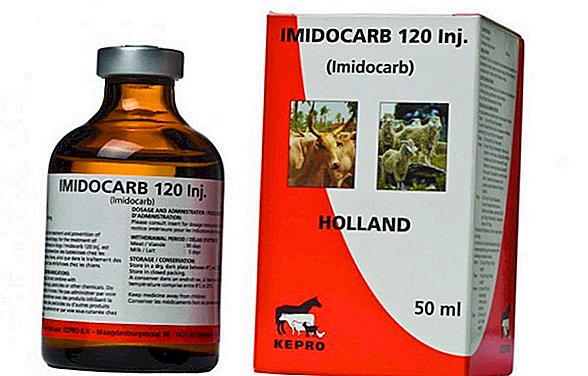
- "Tripoflavin" - means for intravenous administration, use it in the form of a 1% aqueous solution with a calculation of 3-4 mg / kg of weight. Apply once, but if there is no improvement, after 24-48 hours, the introduction of the drug is repeated.
- "Albargin" - A powerful anti-parasitic agent of complex exposure. The drug is administered once by intravenous injection - 1.5% solution with a calculation of 7.5 mg / kg of weight;
- vitamin b12 - used to stimulate blood formation. Apply a means for injection (intramuscularly, subcutaneously, intravenously) with a calculation of 1-2 mg per animal per day. Used for several days, to improve the condition of the blood and its structural elements;
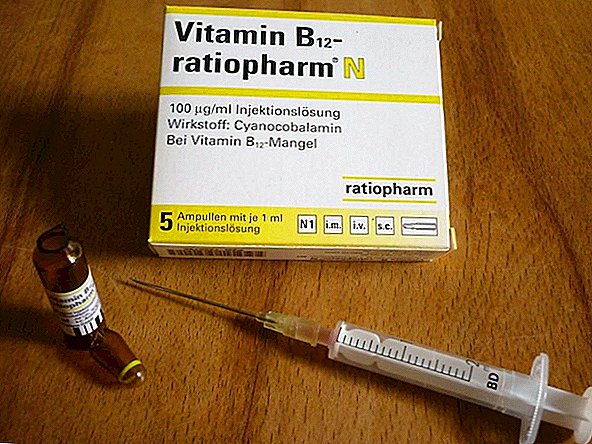
- Glauber's salt - contributes to the improvement of the state of the body with atony of the foreglobe Use the drug in the form of a 1% solution for washing scars with a gastric probe;

- caffeine - used to improve the work of the cardiovascular system. Use means for hypodermic injections at the rate of 5-10 ml on 1 specimen per day. Enter the solution once, but if necessary, repeat the procedure;
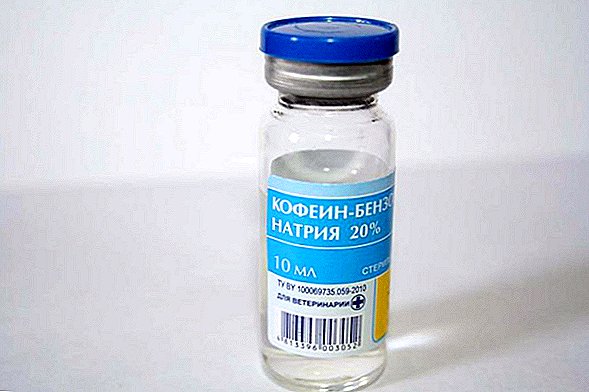
- sodium chloride - used for the treatment of persistent atony of the foreglobes. The drug is administered intravenously, in the form of 10% aqueous solutions at the rate of 200-300 ml per 1 specimen per day. The duration of therapy depends on the complexity of the pathology, but often does not exceed several days.

Proper feeding
Compliance with a varied and healthy diet in the treatment of babesiosis is one of the main conditions for effective and safe treatment. During this period, the body of a sick animal requires all sorts of vitamins, minerals and other nutrients that contribute to the activation of immunity.
We advise you to consider all about feeding dry cows.
To this end, livestock nutrition needs to be enriched with additional finely chopped:
- meadow grass hay;
- fresh root vegetables;
- green grass.
To improve the state of immunity will also help fresh fresh milk or reverse, use this supplement three times a day, 1.5-2 liters per 1 individual.  Fresh fresh milk for cow immunity
Fresh fresh milk for cow immunity
Prevention
The main preventive measures to prevent babesiosis include:
- grazing on cultivated, checked and tick-protected pastures;
- stabling of cattle;
- regular care for the appearance and cleanliness of animals;
- every 10 days treatment of external covers of livestock with acaricidal preparations during the mass development of ticks ("Permethrin", "Butoks", "Benzophosphate", etc.);
- in unfavorable regions, Azidin-vet (3.5 mg / kg of body weight) or Hemosporidin (0.5 mg / kg of body weight) is administered once to animals at the onset of a mass mite.
 Care of the appearance of the cow, as a measure of prevention of babesiosis Babesiosis is one of the most severe parasitic invasions, which occurs in cattle in both private and private farms. Every year, this disease spreads over vast territories, therefore, sick animals can be found everywhere, in almost all climatic zones.
Care of the appearance of the cow, as a measure of prevention of babesiosis Babesiosis is one of the most severe parasitic invasions, which occurs in cattle in both private and private farms. Every year, this disease spreads over vast territories, therefore, sick animals can be found everywhere, in almost all climatic zones.We recommend finding out how much weight a cow has and what it depends on.
Today, there are many different drugs for the treatment of disease, but the most effective is a complex of methods aimed at the timely prevention of the disease.







